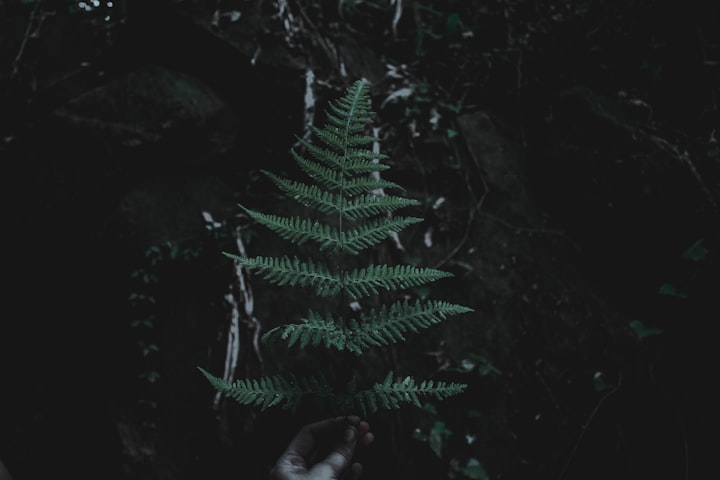The Thinning of The Veil.
A Brief Overview of Samhain.

If you are familiar with the Pagan, Druid, or Wicca communities at all, whether personally or historically, then it’s likely that you have at least heard of the holiday of Samhain. Samhain, (Pronounced Saa-wn) is considered to be the pagan new year and the time of year when the veil between this present world and the spiritual, or ancestral, is the thinnest. While many consider Samhain to fall on or around the secular folk holiday of Halloween and celebrate it simultaneously, they are vastly different holidays with different origins and atmospheres.
Samhain is believed to have originated from the Celtic Fire Festivals, and the timing of these modern celebrations differs vastly depending on beliefs, traditions, and geography. As discussed previously, many in the northern hemisphere celebrate Samhain from October thirty-first to November second. Many Pagans, regardless of their geographical location, celebrate based on astronomy, launching their celebrations to coincide with the astrological midpoint between the fall equinox (Mabon) and the winter solstice (Yule.) Others celebrate Samhain during the October full or new moon, or during the closest weekend to it. These festivities often take place over the course of several days and nights, as a way to end the harvest, welcome the quiet of winter and connect with ancestors in the spirit world.
One of the most interesting elements of Samhain, and likely one of the many reasons it’s often linked to Halloween, is the thinning of the veil. Those that celebrate Samhain believe that the veil that separates the physical and spiritual worlds is thinnest during this time, allowing for communication and connections to take place between the two worlds. This is often considered to be a time to reach out and reflect on those who have come before us.
Let’s take a look at some common practices of Samhain. While there are as many ways to celebrate the holiday, and they differ wildly between location and belief systems, here are a few practices you can easily incorporate into your own practice.
Host a Dumb Supper. A dumb supper (sometimes referred to as a Feast of The Dead) is a feast held by many pagans on Samhain as a way of “dining with” and honoring the dead. The term dumb, in the name, refers to silence, not intellect; as the dinner is a somber event held in complete silence. Table settings are placed as is traditional at a dinner party, with the exception of the head of the table. The seat at the head of the table, the seat that is often for the guest of honor, is left empty at a dumb supper as a seat for the spirits. A tea light or candle is lit at the spirits’ place. Guests are encouraged to bring a private note to a deceased loved one, and at the end of the meal, they burn the note in the candle’s flame. Different silent prayers are also often encouraged, depending on the belief systems.
Build an Ancestor’s Altar. Build a special altar to honor your ancestors by collecting photographs, notes, and any special mementos. Light candles and speak the names of any ancestors and messages you would like to pass along. Ancestors’ Altars are often created especially for Samhain but are sometimes left up year-round.
Cemetery Visit. If you live within comfortable traveling distance to a cemetery where one or some of your loved ones reside and are able to, visit them on Samhain. Tend to their gravestones, tidying up however may be necessary, and sit with them for a while. This can be a great time to call on fond memories and time spent together when they were a part of the physical world. Make sure to leave an offering before you go. Traditionally offerings can be anything from bouquets of flowers to dried herbs. Make sure, however, that the offering will be an item that is not going to harm the nature around it.
Studying the Ancestors. Samhain can be a great time to not only reflect and remember the ancestors you knew but to learn more about those you may not have met. Contact some of your living relatives, preferably older ones if you are able, and ask them to share information or stories about your family history. Make sure to take notes so you can one day pass these stories on to your own descendants. If you are not able to talk to family members, you can take this time to learn more about your family's culture in general. Read online or go to your local library and learn a little about your heritage, and what life may have been like for your ancestors decades or even centuries ago.
Start anew with fire. Bonfires, campfires, and even candles will work. Write down on a small piece of paper something you'd like to leave behind in the previous year, whether it be a habit, behavior, or challenge, and burn it in the fire. Be sure that in whatever way you choose to do this, you practice fire smarts and safety above all else. If you are using a campfire or bonfire, make sure your fire is contained and in a location that is safe and that you are allowed to have a fire. If you are unsure, a small candle, indoors or out, will work just fine.
Do you have any ways you like to celebrate Samhain that aren’t on this list? Let me know in the comments!
If you’d like to keep track of the moon cycles this upcoming year, I highly recommend this lunar calendar.
If you’d like to learn more about the Wheel of the Year that Samhain falls on, I highly recommend the book Sacred Actions: Living The Wheel of The Year Through Earth-Centered Sustainable Practices, you can find it here.
About the Creator
Alys Revna
Writer of things. Mostly poetry, fiction, and fantasy. ✨






Comments
There are no comments for this story
Be the first to respond and start the conversation.